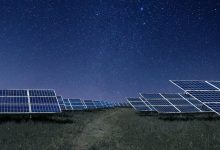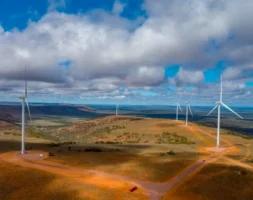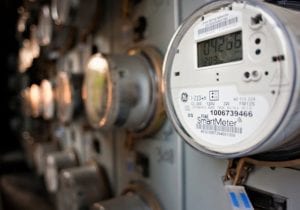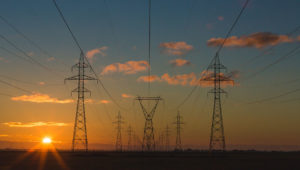The BP-backed renewable energy developer behind a 200MW solar farm planned for inland New South Wales has used one of its UK grid-connected PV projects to help balance Britain’s electricity network – at night.
Lightsource BP said on Monday that a November 4 trial using one of its solar plants in East Sussex had successfully provided night-time reactive power voltage support services to the electricity network – a first for a solar asset in the UK.
The company said the service was delivered through UK Power Networks’ distribution network, and had the potential to help National Grid ESO – Britain’s network operator – to smooth overnight voltage fluctuations.
Lightsource BP technical director, Chris Buckland, told The Guardian that the trial used the solar farm’s inverters – usually used in the process of converting solar energy to electric current – to adapt grid electricity to a healthier voltage.
They did this, Buckland said, through an “inexpensive tweak” to the project’s electrical equipment, that re-purposed the inverters as a kind of distortion mirror, reflecting the energy network’s voltage back to the grid at a slightly different level.
It meant that the solar farm could be called on to help smooth the grid with only two seconds’ notice, the company said, particularly on windy nights, when there was an abundance of wind power but low demand, or on still nights in winter when demand could be high.
And over the longer term, it could help defer the need for hundreds of millions of pounds worth of grid upgrades or new infrastructure.
“The success of this trial clearly demonstrates that innovation is key in addressing the future growth of the energy sector,” said Lightsource BP COO Kareen Boutonnat.
“With electricity demand increasing so rapidly we have to be in a constant state of evolution in order to solve the problems of the future.
“Right now, we have proven that solar plants can play a larger role across the electricity network – even at night,” she said.
“However, it is only the beginning and as our team continue to develop and support this project, we will remain focused on pushing the boundaries and forging partnerships to remain a leading innovator across our sector.”
The trial followed three years of testing and development under the joint National Grid ESO and UK Power Networks ‘Power Potential’ project, which aimed to create a reactive power market for distributed energy resources in the South East.
National Grid ESO’s project lead on Power Potential, Dr Biljana Stojkovska, said the trial with the Lightsource BP was part of its broader goal of operating the GB electricity system carbon free by 2025.
“We are seeing more renewable generation come online – such as wind and solar – which in turn requires finding new ways of managing system characteristics like voltage.
“This innovative trial, which forms part of our Power Potential project, is an exciting first step. We look forward to seeing it progress over the coming months as we explore new reactive power markets for distributed energy resources, and their potential to cut costs for energy consumers.”
Lightsource BP says it has plans to conduct a second trial next month, and to strike its first commercial deal with National Grid next year.
Meanwhile, in Australia, Lightsource BP is set to get started on a 200MW solar farm near Wellington in NSW – the first in what it says will be a “number of projects” across the NEM.
As RenewEconomy reported last month, Lightsource BP secured debt and finance for the project with ING and EDC (Export Development Canada), and has inked a 15-year contract to sell most of its output to Snowy Hydro.
“This project is the first in the Australian pipeline to come to fruition, and is just the beginning of Lightsource BP’s ambition to be a leader in the Australian solar market,” said Adam Pegg, the country manager for Australia at Lightsource BP.
“We’re proud to be pushing the low-carbon transition forward in this country, and to be contributing to the company’s wider goal of achieving 10GW of solar in the next five years.”
Pegg told RenewEconomy on Tuesday that the reactive power voltage service provided by the East Sussex solar farm was not currently part of the base case for the Wellington project, but that there was potential to offer the service in future Australia, depending on the outcome of the trials in the UK.
“From what I understand of the project it’s a pilot with the National Grid… and both parties looking at how it can benefit the grid and the solar plant in the future.
“It makes a lot of sense if you can provide reactive support to the grid when a solar farm’s not operating.”
Pegg said Lightsource BP currently had about 1GW of renewable energy projects in the pipeline at various stages of development in Australia.
“We’re here for the long term,” he said. “We’d like to do a Wellington every year.”










